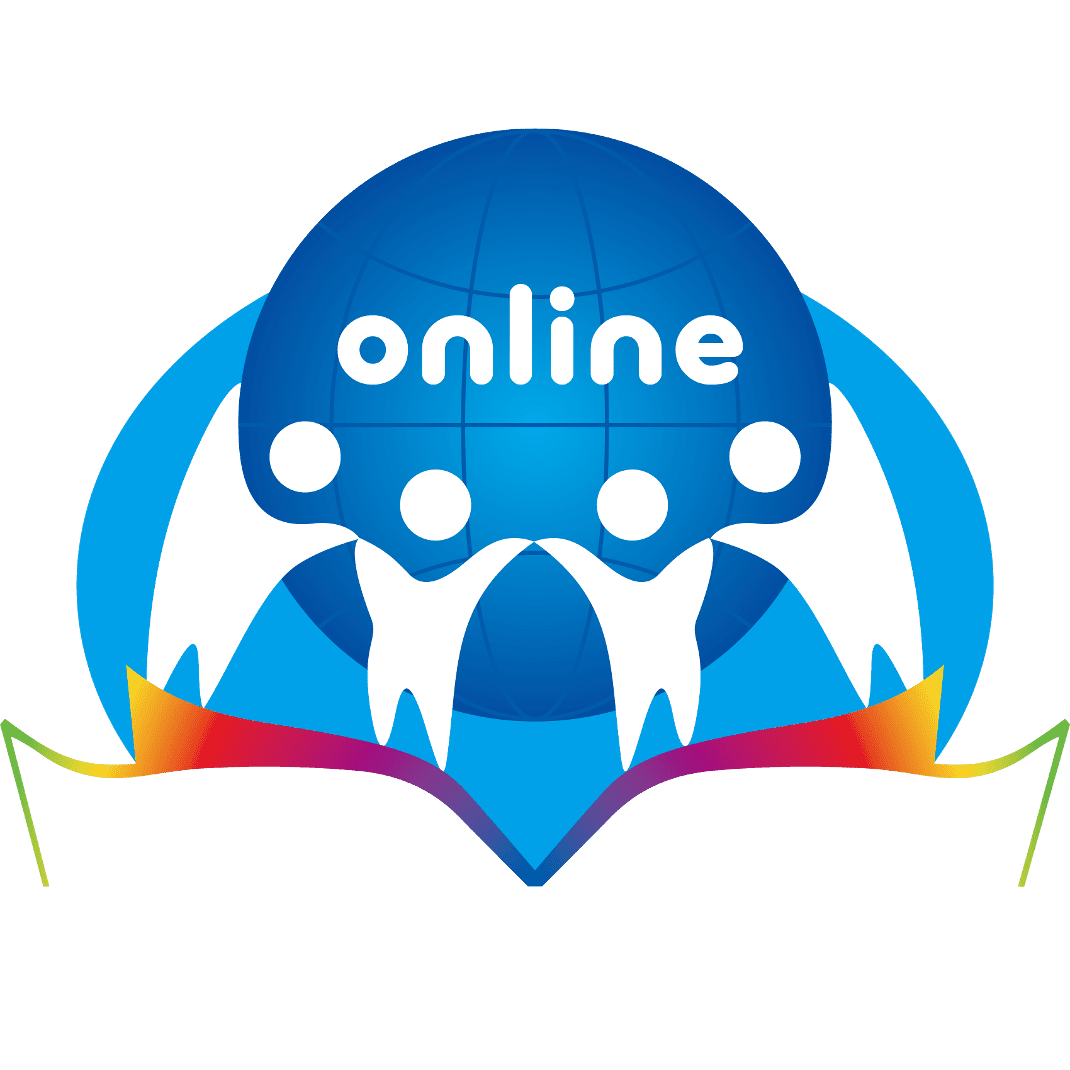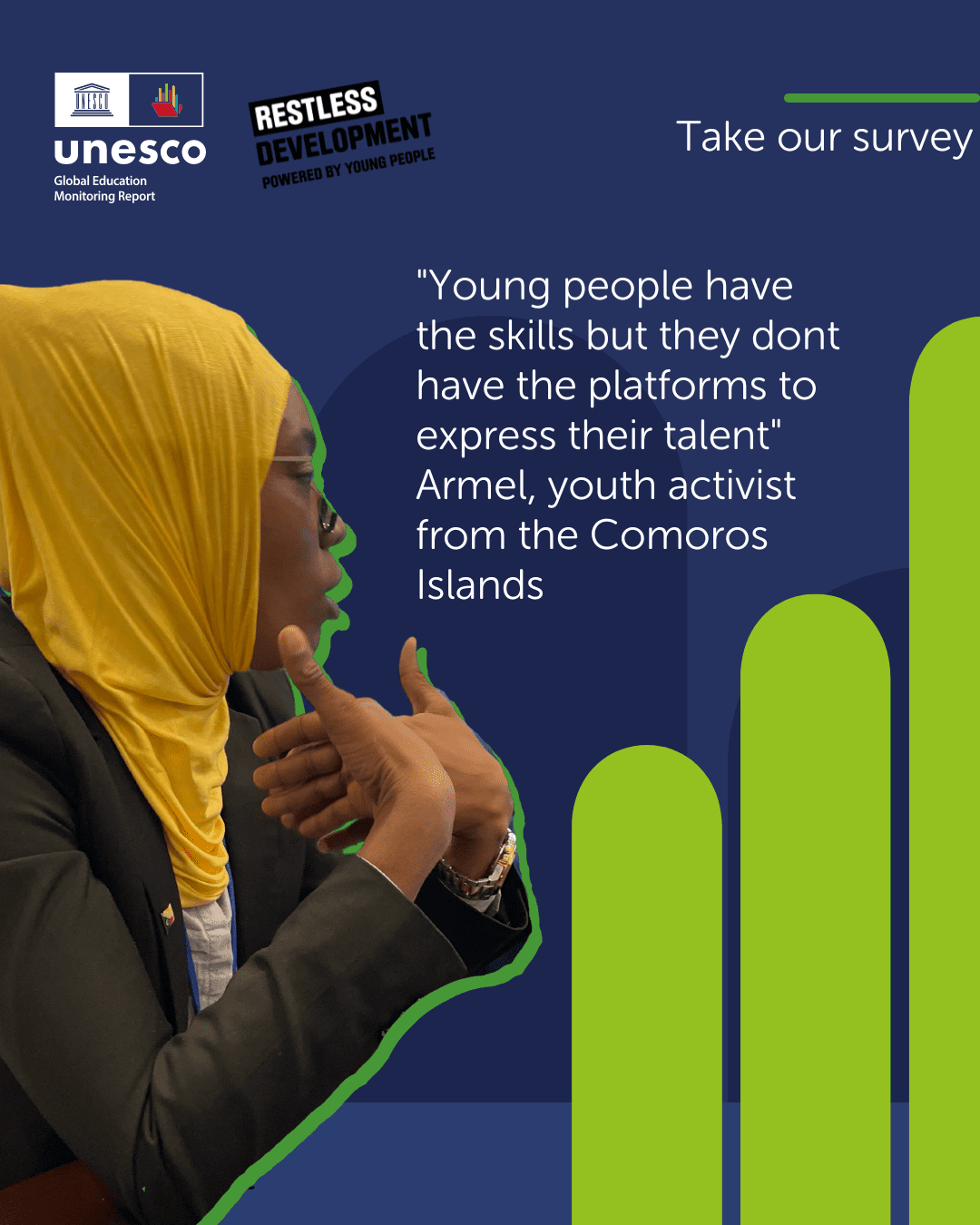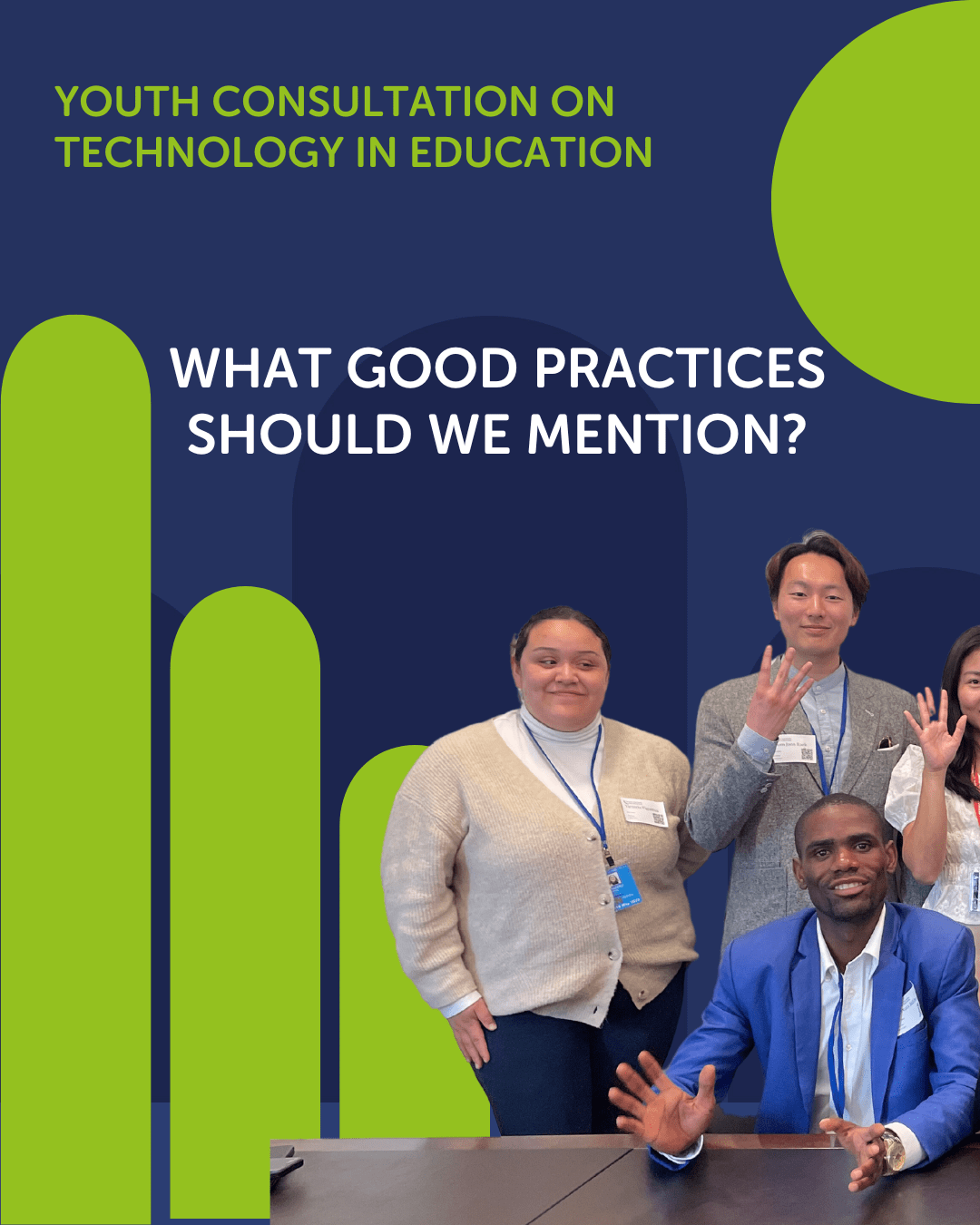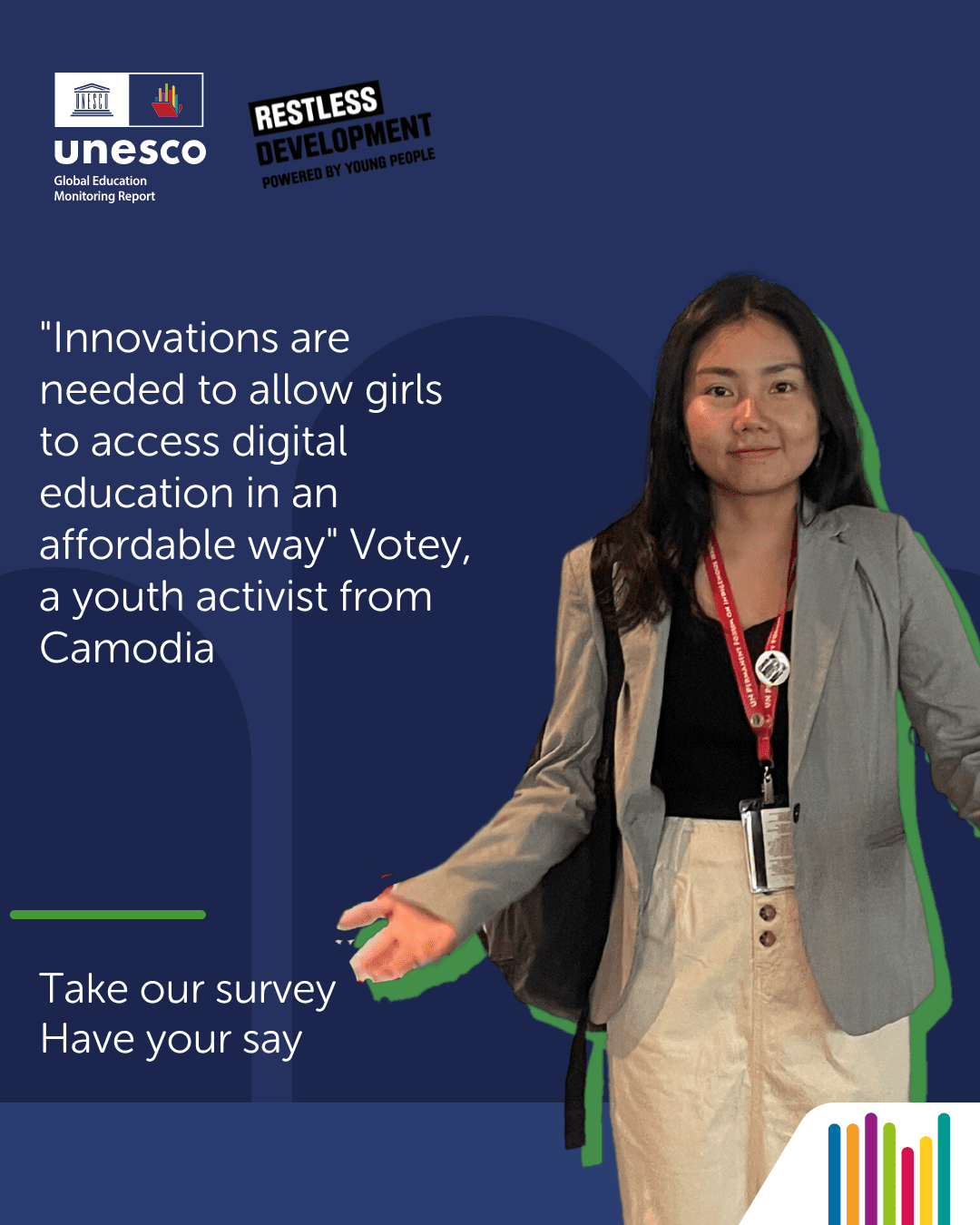
UNESCO highlights the need for a collective voice in building sustainable, equitable, and quality education systems that make effective use of technological tools. Particularly, the youth, who are at the heart of the learning process, have a significant role to play. In light of this, the Global Education Monitoring (GEM) Report has launched a global youth consultation to gather insights from the youth on the use of technology in education. This initiative is part of a larger effort to include these voices in a youth-centric version of the 2023 GEM Report, which UNESCO plans to publish in July, focusing on technology and education.
Before I share some of my thoughts on two of the question from the GEM Report Survey, I would like to bring your attention to the ongoing Online Education Dialogue 2023: “Navigating AI-Driven Digital Transformation in Higher Education”. This dialogue is a crucial platform that brings together educators and policymakers to foster a comprehensive understanding of how AI can be leveraged to enhance teaching and learning experiences, promote equity and inclusivity, and prepare students for the future job market. The insights and recommendations from this dialogue will be instrumental in shaping the policies and strategies for integrating AI and other digital technologies in higher education.
Now, let’s delve into my responses to two of the questions from the GEM Report Survey.
4. Which examples of good practices, platforms and projects would you like to be featured in the Youth version of the 2023 GEM Report?
Rain Classroom is an innovative tool developed by Tsinghua University and XuetangX, designed specifically for blended learning environments (before, during, and after classes) and, since COVID-19, hybrid learning environments (in-person and/or online). This smart teaching tool has already demonstrated significant results in transforming the learning environment for students in China, making the traditional method of memorizing concepts for exams a thing of the past. Through the Rain Classroom, students are able to interact with their teachers both in and outside of the classroom using their smartphones, promoting a more dynamic and engaging learning experience. Teachers can share slides, videos, and exams through the app, and students can provide their feedback in real time, allowing teachers to adjust their teaching strategies accordingly. Importantly, Rain Classroom also provides real-time and personalized analysis of students’ performance in class, making it a powerful tool for understanding and improving learning outcomes.
In terms of relevance, Rain Classroom has already proven to be a highly effective tool for education in China and has been steadily increasing its international expansion efforts. Within less than two years of its inception, the platform has reached nearly three million users, covering almost all universities in China. Moreover, it provides free access to more than 10,000 MOOC videos, allowing teachers to integrate Rain Classroom with any type of learning system that they may be using. These facts demonstrate that Rain Classroom is relevant to the current educational needs and practices.
For equity, Rain Classroom has been designed to be easily accessible and user-friendly, with a special focus on enabling interaction between students and teachers through mobile phones. This makes education more accessible to students who may not have access to traditional learning resources or environments, thereby promoting equity in education. Furthermore, XuetangX, the platform that hosts Rain Classroom, currently has 100+ million enrollments across more than 3,000 MOOC courses offered, showing its commitment to providing low-cost, efficient access to knowledge, certificates, credits, and even degrees1.
In terms of scalability, Rain Classroom has shown great potential. The platform has been well received not only by students and teachers but also by the authorities of the Ministry of Education of China, who see Rain Classroom as a tool to modernize and introduce the use of active learning technologies in middle and high school education. This demonstrates the scalability of the platform, as it has the potential to be implemented in a wide variety of educational settings.
Finally, for sustainability, studies have shown that Rain Classroom could be instrumental in facilitating the transition to online teaching, which became particularly crucial during the COVID-19 pandemic. Studies found that the platform could effectively support teachers in developing and reorganizing their instructions to meet the technological demands of online teaching, thereby facilitating their continuous usage of the platform even after the crisis. Research also found that the system could predict the retention of online teaching among teachers with an accuracy greater than 73%, indicating a potential for sustainable use of the platform. Rain Classroom has been working with educational institutions and international organizations to further clarify and identify teacher roles and practices in the digital era, which could be further recommended to educators to guide their use of technology and pedagogical knowledge in their teaching, demonstrating how Rain Classroom can contribute to the 2030 Agenda for Sustainable Development and beyond.
In summary, Rain Classroom represents an innovative and effective solution for advancing education in the digital age. It has demonstrated significant impact in China and has the potential for global implementation, making it an excellent candidate for inclusion in the Youth version of the 2023 GEM Report.
5. What are the main opportunities for the use of technology in education in your country and region?
The use of technology in education presents several significant opportunities, particularly in China and the broader Asian region, including the following:
- Addressing Educational Inequality: Technology can help alleviate the stark urban-rural educational divide in countries with mega populations like China and India, where access to quality education is often limited in rural areas. Online learning platforms can deliver quality educational resources to these under-resourced areas, promoting equity in education.
- Massive Scale Education: Given the large populations in many Asian countries, EdTech can support the delivery of education at a massive scale, reaching millions of learners cost-effectively. This is exemplified by platforms like XuetangX in China, which has millions of users.
- Cultural Emphasis on Education: In many Asian societies, there is a strong cultural emphasis on education. Technology can cater to this high demand for education, offering platforms for continual learning beyond traditional classrooms.
- Future Workforce Development: Asia, being a global hub for industries like technology and manufacturing, needs a workforce skilled in areas like AI, robotics, and data science. EdTech can provide training in these future-oriented skills, preparing learners for the jobs of the future.
- Government Support: In countries like China and Singapore, there’s substantial government support for integrating technology in education, which can accelerate the adoption of EdTech solutions.
- Data-driven Education: With large student populations, Asian countries can leverage data analytics in education to personalize learning, improve teaching methods, and enhance educational policy-making.
In summary, the unique characteristics and needs of the education landscape in China and Asia present significant opportunities for technology to make a meaningful impact, from addressing educational inequality to preparing learners for the jobs of the future.
Below is the original article on the World Education Blog at https://world-education-blog.org/2023/06/07/calling-youth-what-is-the-top-priority-in-thinking-about-technology-in-education/
Calling youth: What is the top priority in thinking about technology in education?
With the pace of new digital technologies entering our societies seemingly speeding up, there is a temptation to think all of them can have an application in education. But this is far from true, and no single technology will be suitable for every context and every kind of learning. That means we all have a voice in saying what can be done to build sustainable, equitable and quality education systems using technological tools. Youth, in particular, who are currently learning, have a strong role. We are calling on youth to add its voice.
Together with Restless Development, the GEM Report is launching this short survey as the start of a global youth consultation we are running to hear youth voices on how technology should be used in education.
- What should the priorities be?
- What are the core challenges?
- How should we protect learners when learning through technology?
- What one message do you want to give policy makers on this issue that we can elevate together?
Your voices will be part of a global movement we are building with Restless Development to feed into a youth version of the 2023 Global Education Monitoring Report to be published by UNESCO this July on technology and education.
The discussions have already begun, with a first gathering of youth activists in New York during the ECOSOC youth forum in May. We heard your voices about making sure that girls access digital devices, and that many devices cannot be accessible for children with a disability. You spoke out about the need for a more critical take over the way that children’s data is being used by technology firms. And we heard your call for more attention to be paid on making sure that digital skills are taught in even the most hard-to-reach areas and to the most marginalized students.
The SDG 4 Youth Network and Global Students Forum have also joined the movement, helping to spread the word on the opportunity this platform provides for youth voices. Starting soon, we will be holding several more youth-led regional consultations aiming to better understand the challenges and opportunities young people from around the world face when using technology in education and to hear their recommendations for policymakers.
A call for expressions of interest for youth organizations to organize these consultations and take part in associated advocacy activities will be launched in July.
Take the survey here and stay in touch to find out more!




